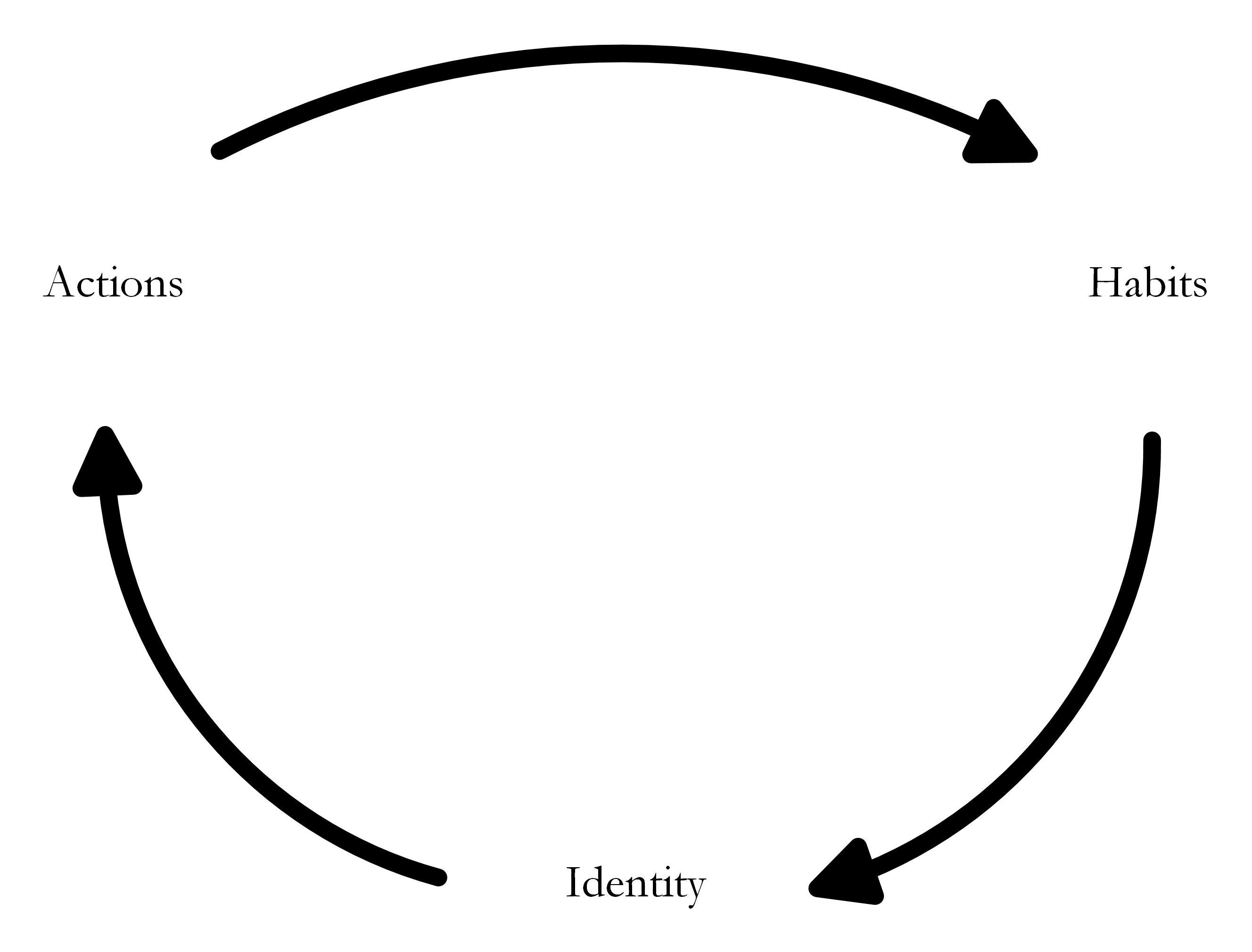Professionalism and Habits: Who Do I Want to Be?
However, professionalism doesn’t automatically start when one is hired into a job. It begins as one is training to become a professional similar to any other skill needed to join a community. In his book titled Turning Pro, Steven Pressfield (2012) clarifies “the difference between and amateur and a professional is in their habits. An amateur has amateur habits. A professional has professional habits. We can never free ourselves from habit. But we can replace bad habits with good ones.” So, as one builds towards becoming a professional one needs to be aware of the habits they are building to ensure they are the ones they want for the person they want to become. This connection between habit and identity is not a new one. A summary of Aristotle’s philosophy on “moral excellence” asserts, “We are what we repeatedly do. Excellence, then, is not an act but a habit” (Durant, 1927).[1] So, habit and professionalism and identity are inexorably intertwined, but how do we craft new habits and reinforce good ones? Even in contemporary works, like James Clear’s (2018) book Atomic Habits, the key seems to be small, regular actions to build one’s identity to where they want it to be. The key then is determining who you want to be as a professional then starting small on a regular basis to build the habits and identity that will serve you as a future professional.

Figure 1. The interplay of habit, professionalism, and identity
Example: Boeing and Expediency
What are the consequences of bad habits? When these bad habits catch up with us in professional roles, they can lead to lawsuits, public disgrace, and death. These habits are often justified in the moment as being expedient, or convenient and practical despite possibly being unethical.
In 2011, Boeing was in direct competition with the Airbus’s A320, a new plane that threatened to take a huge chunk of market share. Boeing needed American Airlines’ business and needed a better plane to secure a large deal with them (Gelles et al 2019). Instead of developing a new airplane which would take years, they decided to update their existing 737 model in a few months. As stated in a New York Times article by Gelles et al (2019), “Engineers were pushed to submit technical drawings and designs at roughly double the normal pace, former employees said…” leading to a series of changes that were not as rigorous as normal design parameters would demand. In particular, Boeing had one requirement that highlights the expediency of the design process: “Limit changes to hopefully avert a requirement that pilots spend time training in a flight simulator before flying the Max” (Gelles et al, 2019).
One important design issue that arose was the engine changes created different aerodynamic properties of the 737 MAX causing it to pitch up in some situations. As a compensating measure, Boeing added software called the Maneuvering Characteristics Augmentation System (MCAS), to push the nose down if the angle was pointing at an angle that was potentially too high that might cause a stall.
However, Boeing didn’t inform pilots of this system and didn’t require training them to understand how the new model or this new software operated. As a direct result, the Boeing 737 MAX airplanes had two major crashes one on October 29, 2018, Lion Air Flight 610 and the other on March 10, 2019 Ethiopian Airlines Flight 302. Since then, Boeing has been charged with fraud conspiracy and ordered to pay over $2.5 billion dollars to the surviving families of the 346 passengers who died in those flights. The Boeing Company’s unethical behavior born out of a desire for expediency led to the deaths of 346 people (US Department of Justice Office of Public Affairs 2021).
Learning Tip 2
The Boeing example is a famous one in the engineering profession. Find an example in the media of ethical misconduct in your desired profession. Look for an ethical violation in the code of ethics and try to identify what habits would likely have been practiced and/or neglected to allow the person(s) involved to make such an ethical violation.
Media Attributions
- Figure © Naeem Nedaee is licensed under a CC BY-NC (Attribution NonCommercial) license
- null ↵

